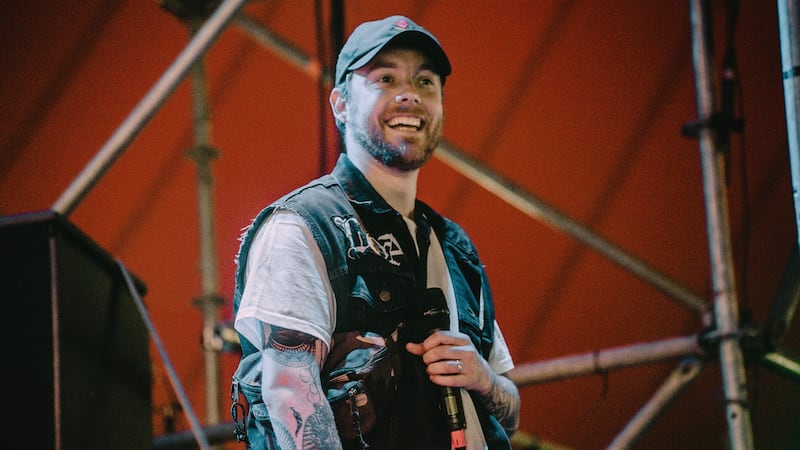It’s hard to offer a single narrative around Irish culture in one year, but a recent weekend in the capital spoke to the fascinating developments, evolutions and perhaps even revolutions in Irish traditional culture and language.
On Saturday December 10th, there were two landmark gigs in Dublin. One was Lankum in Vicar Street, the band returning to audiences in Ireland for the first time in three years. The other was Selló at the Academy. Both of these acts are making art at an extraordinarily high level, brimming with creativity and brilliance. Both are very much of Ireland. When something’s going on in the culture, there’s often a sense that artists are emerging from it, rather than just landing pre-packaged. And so, the culture these artists exist within, and what they’re expressing, begins to tell us a story about ourselves characterised by authenticity, not superficiality.
This story is both a culmination and continuum of Irish traditions and language experiencing a rebirth and a remix. It’s a story about our language and our sounds. And these acts – a black Irish rapper from Clondalkin, and a group of white Irish musicians from Dublin’s north side and Tallaght – are in dialogue, indeed Selló has sampled Lankum. That night, on one side of the city, the audience jumped up and down in the basement of the venue on Middle Abbey Street, phones in hands, yelling Selló's lyrics back at him. His track, As Gaeilge, has the rallying call, “That’s my buachaill, that’s my bro.” Over on Thomas Street, Lankum were, as the co-director of the Abbey Theatre, Mark O’Brien, tweeted, “in touch with something as old as stone and as new as a next breath. What lies beneath what we have built.”
The days of a resistant or derogatory attitude towards the Irish language and traditional music are over in youth culture. We are seeing a generation emerge unencumbered by the shame that colonialism created around the language. The fog of conservative, Catholic-flavoured blinkered nationalism has also lifted. Where older generations may perceive traditions of language and song as nostalgic, or even set in aspic, younger generations are reimagining the qualities of Irish culture as tools of modern expression. New generations are creating diverse, inclusive and expansive Irish identities and forms. Listen to them.
Our ancient language is being made modern; a language of artists of all kinds, a malleable, fun, exciting thing. Crucially, this revival is not coming from the top down, it’s emerging from the bottom up. This sense of emergence means it has roots, not instructions. It means it’s deep, not shallow. It means it’s open, not elitist, and loose rather than dogmatic. This coalescence is creating a cultural moment and movement that is organic. It’s no gimmick.

As somebody who has followed the breadcrumbs of the Irish language in popular culture throughout my life, what is occurring now is like nothing I’ve witnessed before. I can now, as an Irish speaker, go to one of my local pubs, Hynes in Stoneybatter, on a Thursday night, and get a euro discount on a pint if I order as Gaeilge, while the group Ispíní na hÉireann plays in the corner, surrounded by people much younger than me. I can go around to the Cobblestone pub, where young people – many of them Irish-speaking Dubliners – mobilised thousands to protest against its redevelopment, and won. I can go to the cinema, and watch an Irish language film. I can go on Instagram and scroll through T-shirts by young designers inspired by Newgrange, ogham stones, wren boys, Celtic goddesses and Sheela na gigs.
[ Una Mullally: Confessions of a Spotify hypocriteOpens in new window ]
This is the year that so many people wanted to see An Cailín Ciúin, the film played in Irish cinemas from mid-spring into winter, earning over a million euro at the box office in Ireland and the UK. This is the year of Manchán Magan’s Listen to the Land Speak, the year The Scratch brought their raucous metal-tinged trad on tour, the year the Cobblestone pub was saved, the year Michael Keegan-Dolan continued his exploration of dance, the year John Francis Flynn was everywhere, the year sean-nós dancer Edwina Guckian had a crowd at Foxy Johns in Dingle in tears at Other Voices, while the Irish-language strand of the festival, Cogar, took place around the corner. This is the year thousands of young people went to see Irish-language rappers Kneecap, and the year one of their members, Moglaí Bap, had an Irish-language play in the Dublin Fringe Festival.
The language is emerging in all sorts of unexpected places. It’s how Fontaines D.C. decided to open their latest record, Skinty Fia. It’s in rapper Nealo’s decision to translate his album title into Irish for his merchandise. It’s in the success of the online Irish language course, Scoil Scairte. This is the year those of us who once followed the sparsely spread pop culture breadcrumbs, realised we had come upon a feast. The language, and Irish traditions more generally, are being liberated, diversified, owned, shared, and celebrated without strictness. There are no demands for fluency, rules or doctrine. It’s all a stimulating, giddy, chaotic, unpredictable remix. This is a new old thing. And it’s alive.














